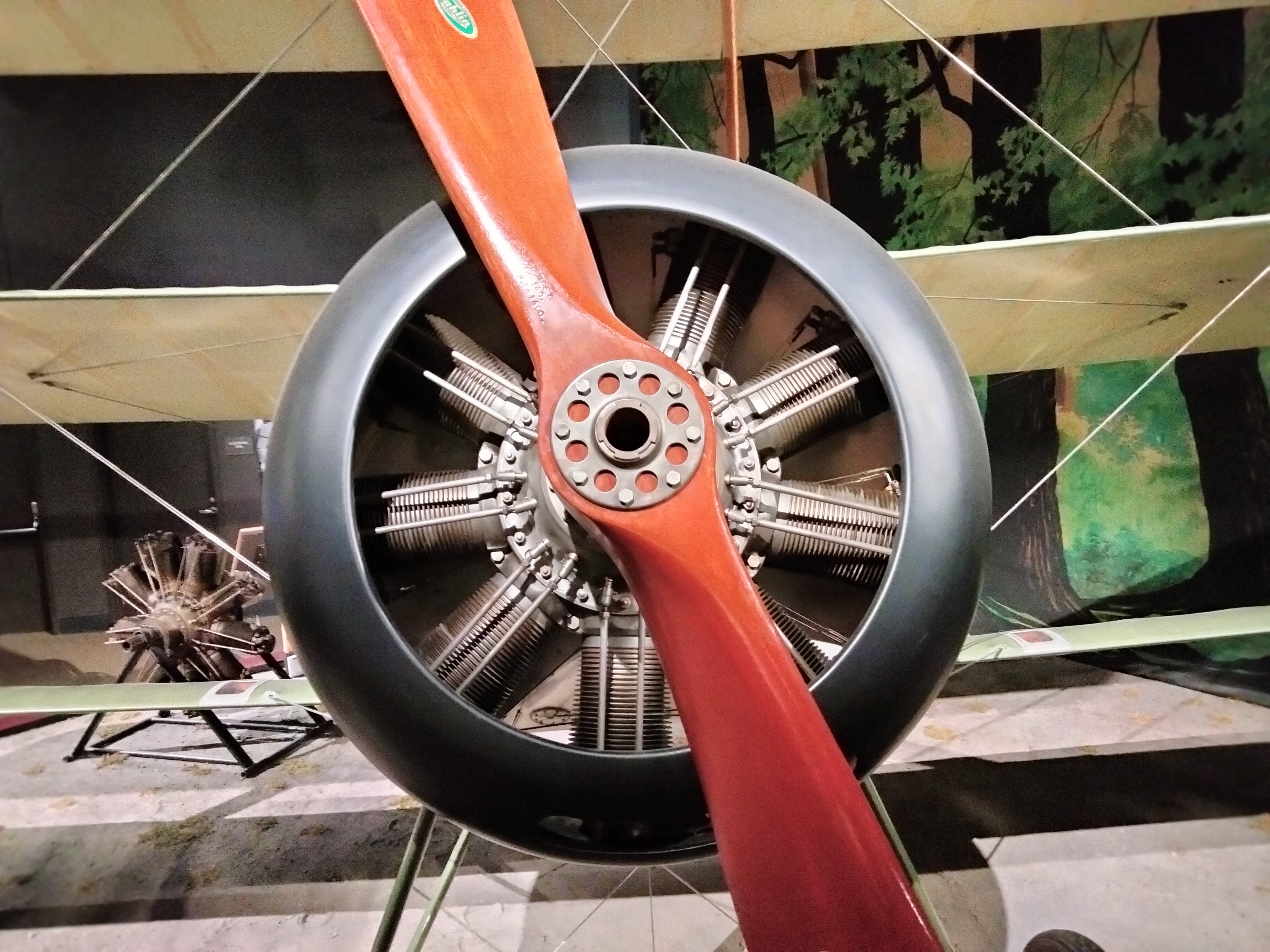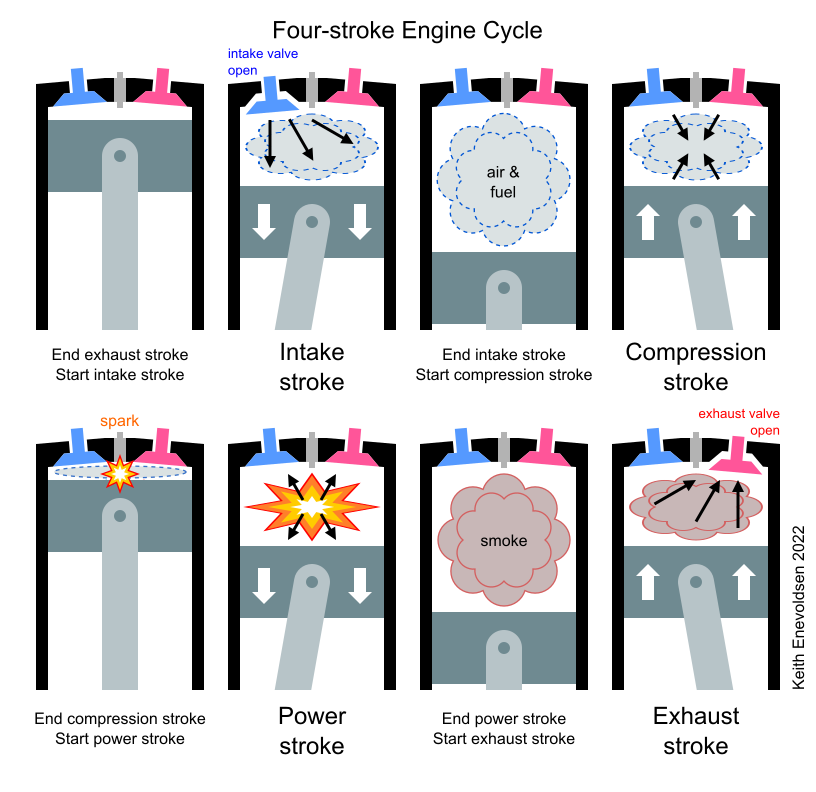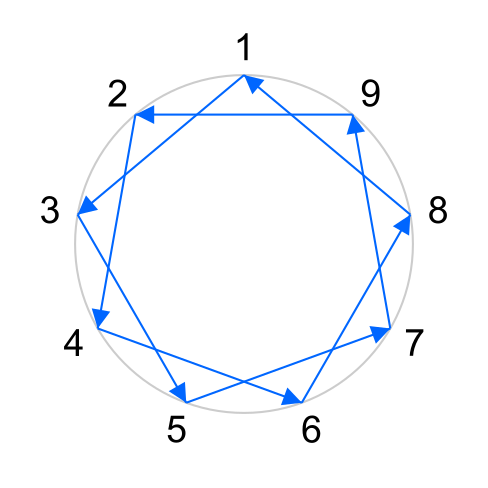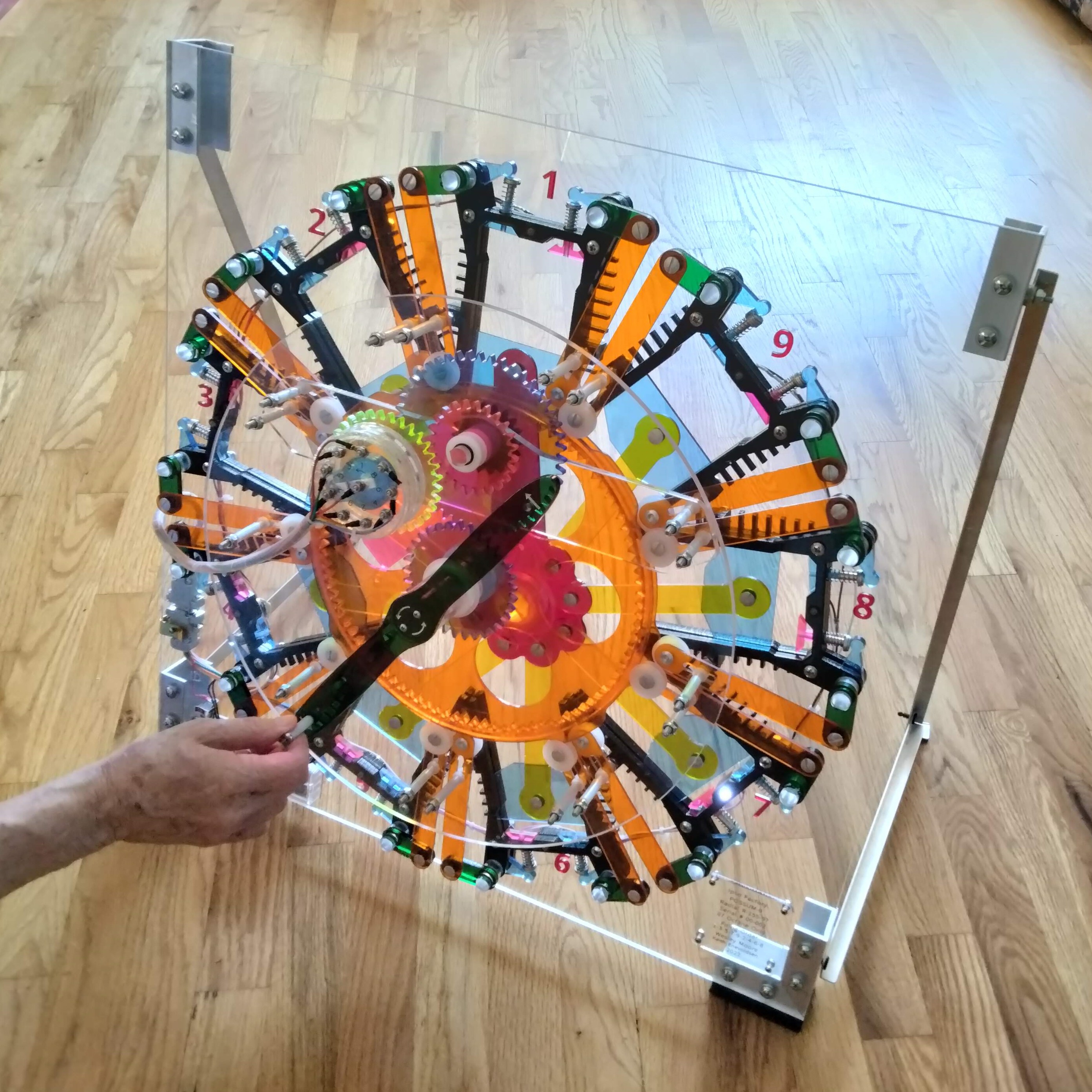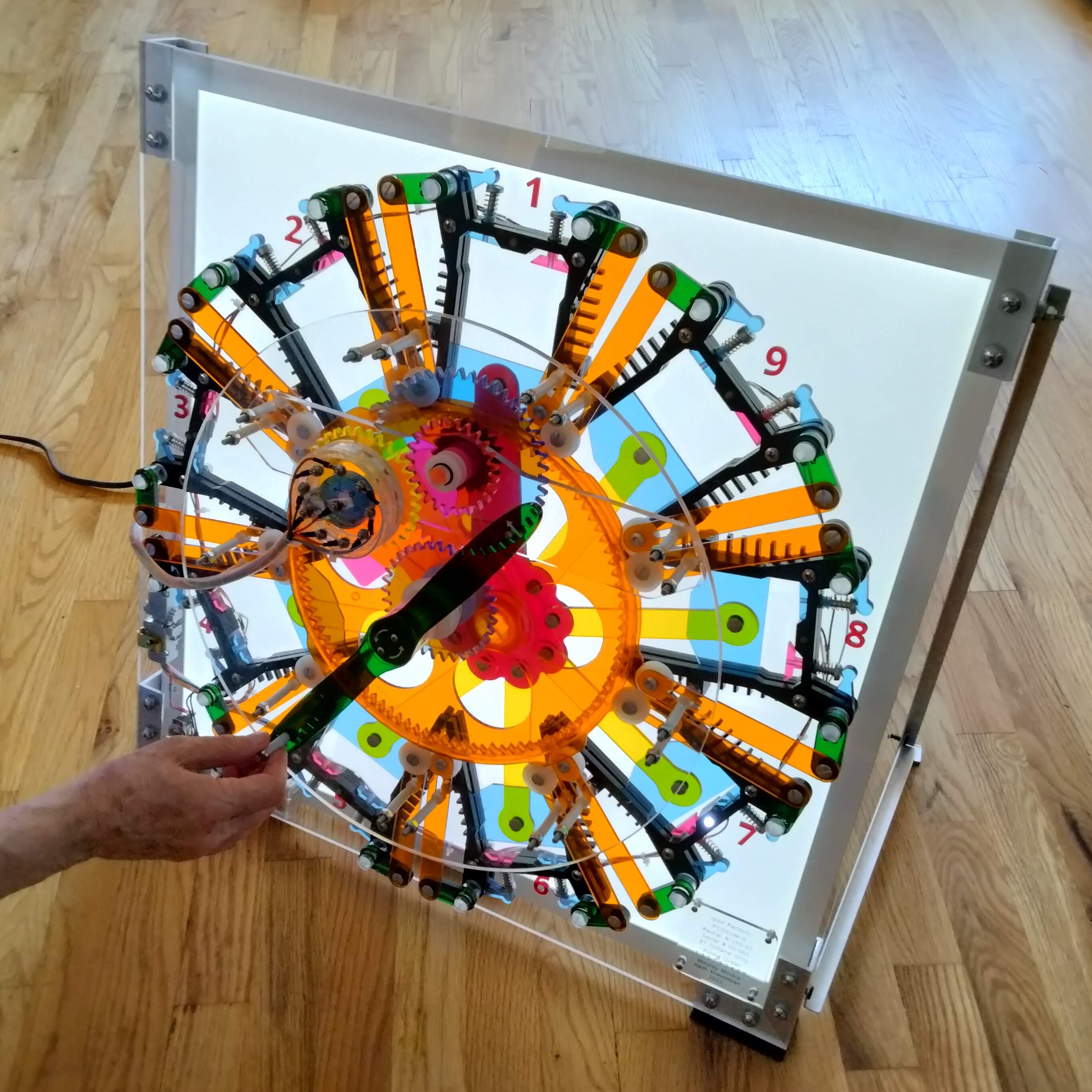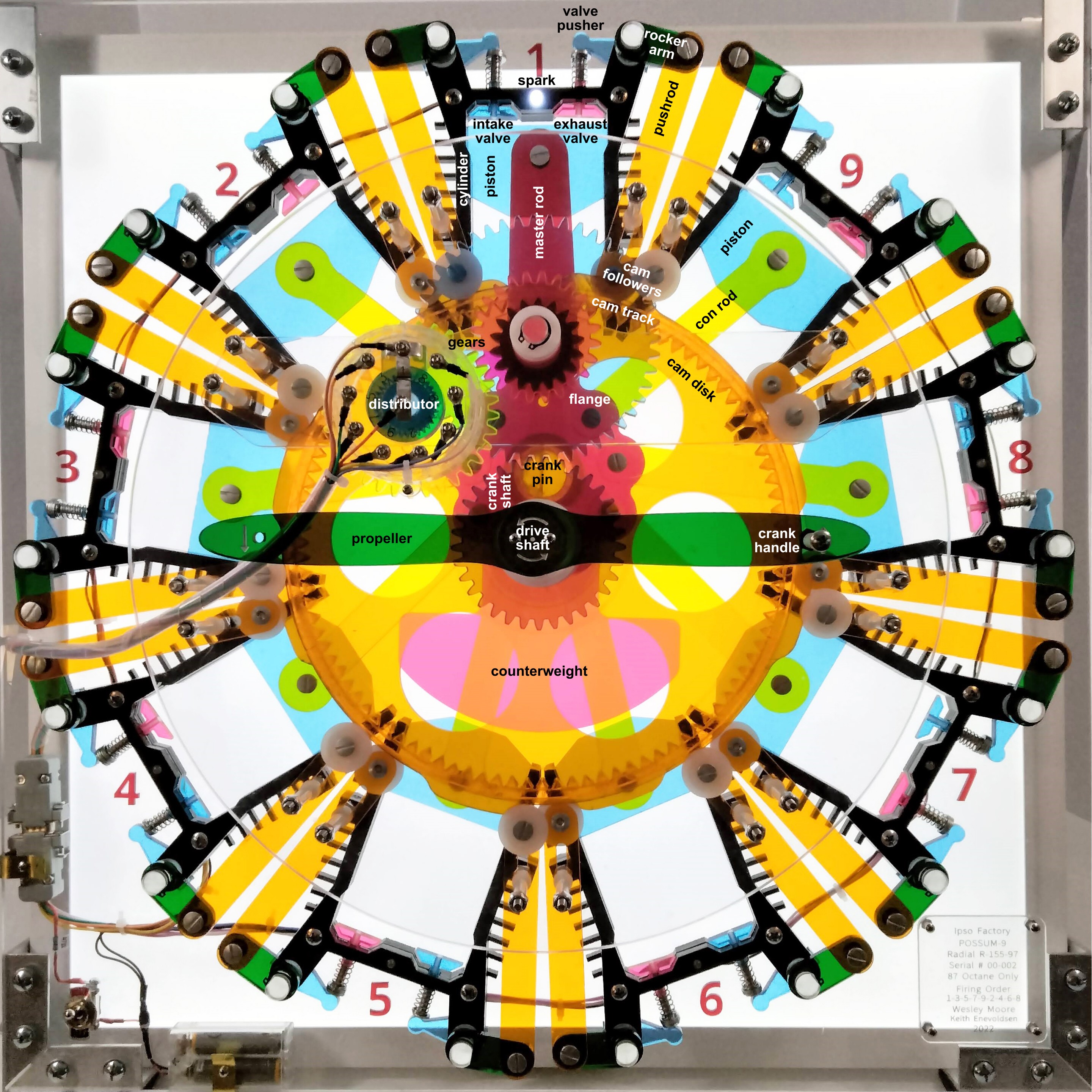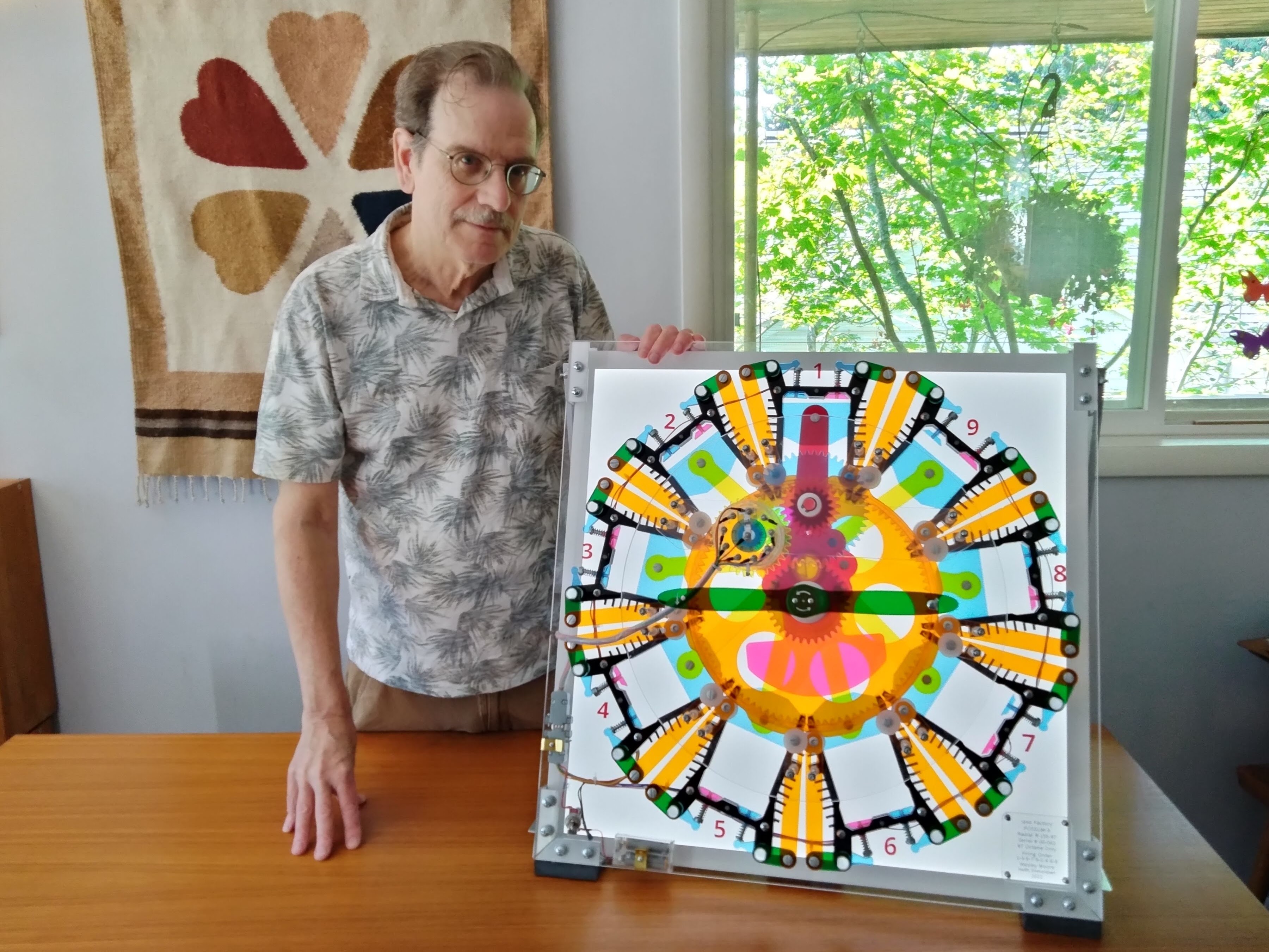Radial Engine Model
Wesley F. Moore (1948-2021), my friend and coworker, built a wonderful hand-cranked airplane four-stroke nine-cylinder radial engine model (model 1) made of colored transparent laser-cut acrylic (plexiglass). The model is a stack of flat layers — the cylinders, pistons, and valves are flat cross-sections. The parts are colored transparent plastic, so you can clearly see every part. It is colorful and luminous when backlit. After Wes passed away, I renovated and improved the model (model 2). I also wrote a User Manual, Assembly Manual, and Maker Manual (see below).
A radial engine has cylinders positioned radially, like the spokes of a wheel, around the crankshaft. Many airplanes in the first half of the 20th century had radial engines.
Here's how the model works. You turn the propeller with a crank handle to make all the parts move — the pistons go in and out, the valves open and close, and the spark plug LEDs flash. The pistons, valves, and sparks are synchronized to demonstrate the four-stroke engine cycle and the radial engine firing order.
If you want to learn more about this model, read the User Manual.
You can make this model yourself if you are a skilled hobbyist maker with access to a laser cutter and shop tools, and you have time to tackle a big project. This may be a good project for you if you are a maker and you know of a good place to display the model (such as an airplane museum or a technical school). To make the model, you will need to read the User Manual, Assembly Manual, and Maker Manual, and download the Templates.
Documents:
- User Manual (PDF) — This introduces the model and tells how to operate the model. It spotlights many things to observe.
- Assembly Manual (PDF) — This describes all the parts and gives instructions for assembling the model.
- Maker Manual (PDF) — This gives instructions for making all the parts of the model. You will also need to download the templates, both laser templates and paper templates. This is a big project. You will need a laser cutter, shop tools, and materials.
- The Story (PDF) — This tells the background story of Wes's original model 1 and Keith's renovated model 2.
Downloads:
- Documents (ZIP) — This package contains the four main documents: User Manual, Assembly Manual, Maker Manual, and The Story. It also contains the two supplements: Revision History and Design Alternatives.
- Templates (ZIP) — To make the model, you must download the templates. This package contains all the templates, both laser templates for laser-cut parts and paper templates for manually made parts. All templates are provided in SVG and PDF formats.
- Diagrams (ZIP) — This package contains several diagrams. Most of these diagrams are in the documents, so this dowload is optional.
- Photos (ZIP) — This package contains several photos. Most of these photos are in the documents, so this dowload is optional.
Supplements:
- Design Alternatives (PDF) — This supplement is only for makers who plan to modify the design of the model.
- Revision History (PDF) — This supplement is only for makers who are interested in the model's revision history.

